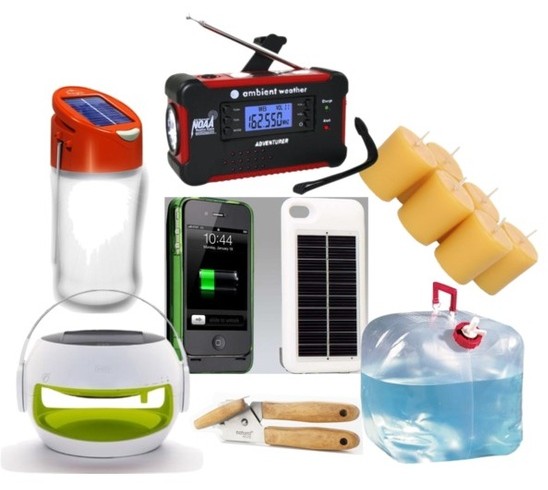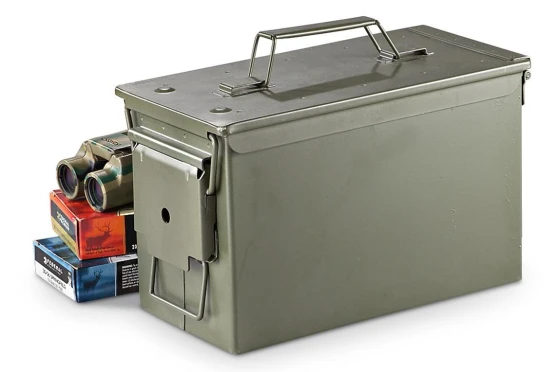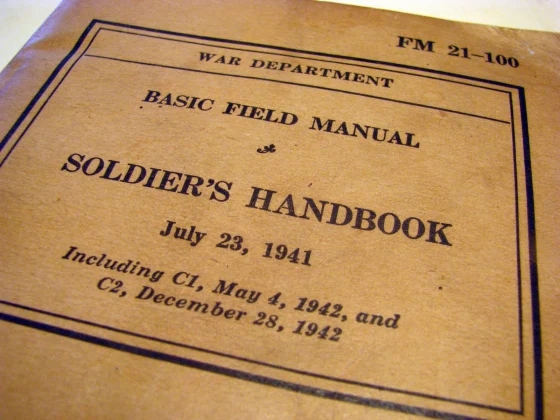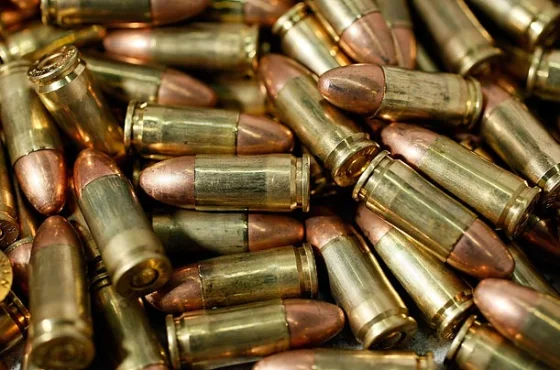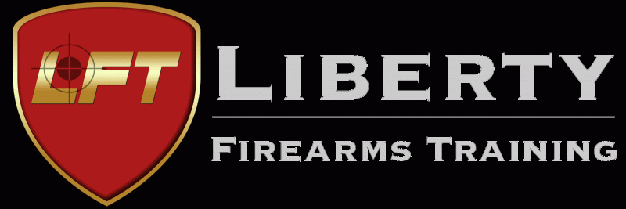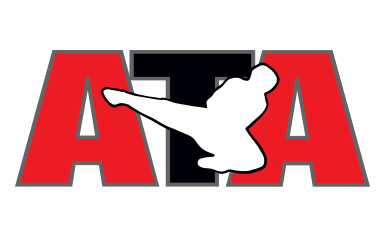These packing checklists are to help you assemble gear and supplies for your home, car, and to carry on your person should you have to evacuate. You can add or subtract items based on your geographical location, regional climate, and perceived threats. If you see anything that you think should be added to any of the checklists, please post a comment at the bottom of the page or contact us via the Contact Us page.
Contents:
- Everyday Carry (EDC) Checklist
- Bug-Out Bag (72-Hour Bag) Checklist
- Home Disaster Preparedness Box Checklist
- Go-Bag Checklist
- Wilderness Survival Kit Checklist
- First-Aid Kit Checklist
- Car Box Checklist
- Go-To Box Checklist
- Range Box Checklist
Everyday Carry (EDC) Checklist:
This is what you carry on you everyday. EDC refers to small items or gadgets worn, carried, or made available in pockets, holsters, or bags on a daily basis to manage common tasks or for use in unexpected situations or emergencies.
Carried on your body and the minimum to fight with:
- pistol
- ammunition (amount is mission dependent)
- small knife or multi-tool
- flashlight
- mobile phone
Depending on the threat level and environment, add:
- medical gear (tourniquet, hemostatic and/or compression bandage)
- compass and/or GPS
- cash (large amount of small bills)
- passport and credentials
- escape and evasion kit
back to top
Bug-Out Bag (72-Hour Bag) Checklist:
Your Bug-Out Bag is your sustainment load that will ensure that you will have enough drinking water, food, shelter, medical supplies, means of communications, and means of self-defense to sustain yourself for at least 72 hours should you have to bug-out. Your kit should be small and light enough to be easily portable.
- Water (bottled, 3 day supply)
- Wide-mouth water bottle
- Food: MREs, canned food with pull-top, energy bars
- Flashlight(s) (quality LED)
- Mulit-tool (quality, Gerber / Leatherman type)
- Machete
- Work gloves
- Emergency FM / AM / weather radio (solar or hand-crank, in a Zip-lock bag)
- Batteries (extra for lights, radio)
- First-aid kit
- Small tarp
- Small tent stakes
- Poncho
- Poncho liner
- Sleeping bag (if weather is cold)
- Para-cord (100′)
- Sterno, or stove & fuel
- Lighters (2, in a small Zip-lock type bag)
- Lighter fluid
- Chem-lights (glow sticks, 3 or more)
- Sanitizing hand gel
- Baby wipes (sealed in a Zip-lock bag)
- Large contractor bag
- Small garbage bags
- Aluminum foil (multiple cooking size sections folded small, Zip-lock bag)
- Small, camp size cooking pot
- Camping flatware (“Spork”) or plastic fast food utensils
- Paper plates
- Paper towels (folded up in Zip-lock bag)
- Toilet paper
- Dry socks (in Zip-lock bag)
- Dry underwear (in Zip-lock bag)
- Gloves & beanie (in Zip-lock bag)
- Bandana
back to top
Home Disaster Preparedness Box Checklist:
The items on this checklist are important to have in your household for emergencies lasting more than 72 hours. These items do not necessarily have to be portable. They are intended to supplement the Bug-Out Bag while you bunker in your own home. You probably have most of these items in your home already. Purchase any items that you don’t already have.
- Water (bottled, at least one gallon per person per day)
- MREs (or canned with pull-top)
- Powered sports drink mix
- Two or more flashlights
- Multi-tool
- Emergency FM / AM / weather radio
- Batteries (extra for lights, radio)
- First aid kit
- First aid kit resupply items
- Whistle
- Sleeping bags / blankets
- Nails, staple gun, and hammer
- Duct tape
- Two large 9’X9′ (or larger) PVC tarps
- Poncho
- Solar powered battery charger
- Insect repellent
- Manual can opener
- Cooking pots
- Large pot to boil water
- Iodine or water treatment tablets
- 550 Parachute chord (500′)
- Lighters (x2)
- Lighter fluid
- Chem-lights (glow sticks)
- Candles
- Sterno (or gas camp stove + fuel)
- Sanitizing hand gel
- Baby wipes
- Large contractor bags
- Small garbage bags
- Zip-lock bags
- Aluminum foil
- Flatware
- Paper plates
- Napkins
- Paper cups
- Toilet paper
- Soap
- Personal hygiene products (tooth brushes, toothpaste, deodorant, razors, etc.)
- Feminine-hygiene products
- Notepad and pen
- Sharpie Marker
- Rx meds
Additional items that will aid with long-term emergencies include:
- Gasoline powered generator + stabilized fuel
- Portable air conditioner
- Propane grill + additional bottles of propane
- Five-gallon buckets (to transport water, wash clothes, or to make a toilet, etc.)
- Water filtration kits
- Drink cooler(s) + ice chests
- Hand tools: saw, hammer, pry bar, rope pulley, carabiner, light-weight rope, screw-drivers, electric-drills, etc.
- Chain saw and fuel
- Yard tools: shovel, rake, leaf or snow blower, axe, etc.
- GMRS walkie-talkies and HAM radio equipment
back to top
Defensive Loadout / 2nd Line Gear Checklist:
This is a list of items that you need to keep with your primary defensive firearm. The items are the absolute basics that you will need to keep your weapon(s) running and survive for a short time should the time come to “shoot & scoot”.
The items will be carried either in some type of military style load bearing vest / chest rig, or small “man purse” where magazines/ammo, flashlight, and blowout kits are readily accessible. The loadout should be light weight, easily manageable, and just enough to let your fight your way out of a situation and survive (not necessarily flourish) for 24 hours. It is not intended to sustain you for a three-week mission in Afghanistan. The bug-out vest and other loose items will be stored in your bug-out bag (see next checklist).
In addition to supporting your primary firearm the Go-Bag also contains items that will supplement your escape and evasion. In times of emergency you may choose to keep medical related and survival items in clothing pockets, or simply carry everything in the bug-out bag.
The bug-out bag should “fit in” to the environment where you think you might carry it. Avoid using “tacticool” bags for this purpose. Use a Nike brand or similar unassuming gym bag that will not attract attention from well-meaning law-enforcement officers, or those intent on stealing your supplies.
Minimal:
- Some type of magazine carrying rig or bag (see Savannah Arsenal’s Defensive Loadout: 2nd Gear page)
- Rifle & pistol magazines (3 to 7)
- Rifle & pistol ammunition (enough to fill your magazines)
- Knife
- Multi-tool
- LED flashlight(s) + extra set of batteries
- Blowout kit (checklist is on the located on this page)
Added Value:
- Hydration system and water
- Chem-lights
- Small duct tape roll (black or olive drab)
- Electrical tape
- Lighter
- Compass
- Handheld GPS + extra set of batteries
- Maps
- Mini weapons cleaning kit (checklist is on the Shooting Page)
- Broken down MRE or Power Bars
- Protective gloves
- Protective eyewear
- Ear protection
- Body armor
back to top
Wilderness Survival Kit Checklist:
This is a list of items that each person must have anytime they venture into the wilderness. They will give you light, fire, a way to signal for help, hunt or fish for food, and navigate. The kit should be small enough to fit in the cargo pocket of your jacket or cargo pants.
- Headlight or small flashlight
- Lighter / fire starter
- Knife
- Fishing kit (hooks, line, sinkers, bobbers)
- Signal mirror
- Compass
- Whistle-compass
- Foil pack
- Glow sticks
- Alcohol wipes
- Band-Aids
back to top
First-Aid Kit Checklist:
This is a list of items that should be kept first-aid kits. Keep a first-aid kit in your 72 hour box, in your home, in your vehicles (cars, boats, aircraft, etc.), and in your outdoor / hiking pack. Get the training to properly use these items.
- Gauze roll
- Gauze pads
- Medical tape
- Scissors
- Band-Aids
- Neosporin
- Tweezers
- Ace bandage
- Rubber gloves (2 pairs)
- Alcohol wipes
- Eye wash
- Tylenol
- Aspirin
- Antacid
- Sinus meds
- Anti-diarrhea meds
- Cortisone
- Snakebite kit
back to top
Blowout Kit Checklist:
The blowout kit is intended to immediately control serious bleeding or other life-threatening condition in a combat situation. The contents of the kit are intended to be used on your wounds. The person rendering aid to you will use your items to treat your wounds. The blowout kit will be contained and easily accessible on your weapon’s load bearing gear/vest or in your bug-out bag. It is important that each person in your group carry their blowout kit in the same place so as not to waste any time trying to find life-saving items.
- Roll of gauze
- Pressure bandage (Israeli or H)
- Ace or self sticking bandage
- Petroleum bandage or Asherman chest seal
- Nasal trumpet
- Surgical or duct tape
- Tourniquet
- Sharpe marker
- Alcohol wipes
- Medical scissors
- Snakebite kit
- Rubber gloves (2 pairs)
back to top
Car Box Checklist:
This is a list of items that should be kept in each vehicle. Most of these items are very compact and may be stored in the spare tire well or similar storage are within the vehicle. If you get a flat tire, split a cooling hose, or loose a fan belt, you are on your own.
- Knife
- Road flare(s)
- Fix-a-Flat
- Tire plugs
- Duct tape
- Electric tape
- Tool set
- Oil
- Spare fuses
- Flashlight / batteries
- Glow sticks
- Work gloves
- Poncho
- Bottled water (especially if you will be driving through the desert or similar hot area)
- Blanket(s) or poncho liner(s) (especially if you will be driving through cold area)
- First-aid kit
- Toilet seat covers (especially if you have children)
back to top
Go-To Box Checklist:
Go-to boxes are intended as “resupply” kits containing basic survival and fighting gear. Metal military .50 caliber ammunition cans make perfect go-to boxes.
- Ammo
- Batteries
- MRE’s
- Gloves
- Med stuff
back to top
Range Box Checklist:
This is a list of items that will make your trip to the gun range much more enjoyable and productive. A large Tupperware or similar type of plastic box works great for storing and transporting these items.
- Cheap paper plates (These make great targets. Either masking-tape rows of plates to cardboard to shoot at, or tape them to create replaceable “kill-zones” on silhouette targets)
- Set of small and medium size screw-drivers
- Set of Allen wrenches
- Tube of “blue” Loc-Tite (non-permanent) thread locker
- Spotting scope (if shooting distances to far to see where the rounds are hitting)
- Heavy duty staple gun plus extra staples (long enough to staple your cardboard securely to your target stakes)
- Sharpie marker (to mark targets)
- Baby butt-wipes (To clean the gun-shot residue off your hands after shooting. Remove them from their plastic box and place in a big Zip-Lock bag so that they do not dry out.)
- Wide masking tape (To tape paper targets to cardboard. Don’t buy cheap tape. It will not tear well and will become a thorn in your side when trying to tape up targets.)
- Hammer (To drive wood stakes into the ground. The target cardboard will be stapled to these.)

























